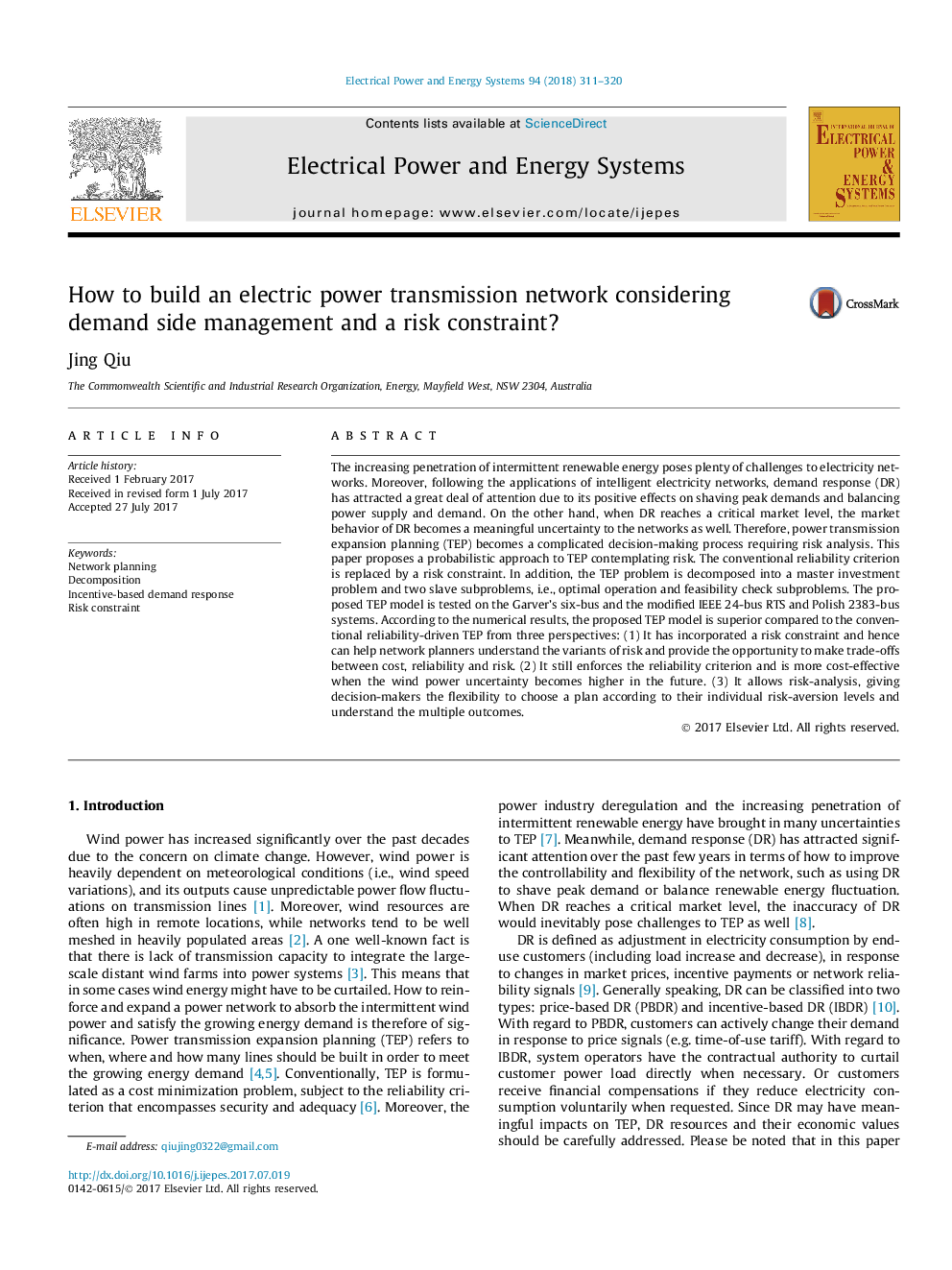| کد مقاله | کد نشریه | سال انتشار | مقاله انگلیسی | نسخه تمام متن |
|---|---|---|---|---|
| 4945598 | 1438706 | 2018 | 10 صفحه PDF | دانلود رایگان |
- A risk constraint is proposed to formulate a probabilistic measure.
- Economic value and market uncertainty of DR are modelled.
- A stochastic planning framework with DR and risk is proposed.
- The proposed approach is a flexible, risk-constrained decision-making tool.
The increasing penetration of intermittent renewable energy poses plenty of challenges to electricity networks. Moreover, following the applications of intelligent electricity networks, demand response (DR) has attracted a great deal of attention due to its positive effects on shaving peak demands and balancing power supply and demand. On the other hand, when DR reaches a critical market level, the market behavior of DR becomes a meaningful uncertainty to the networks as well. Therefore, power transmission expansion planning (TEP) becomes a complicated decision-making process requiring risk analysis. This paper proposes a probabilistic approach to TEP contemplating risk. The conventional reliability criterion is replaced by a risk constraint. In addition, the TEP problem is decomposed into a master investment problem and two slave subproblems, i.e., optimal operation and feasibility check subproblems. The proposed TEP model is tested on the Garver's six-bus and the modified IEEE 24-bus RTS and Polish 2383-bus systems. According to the numerical results, the proposed TEP model is superior compared to the conventional reliability-driven TEP from three perspectives: (1) It has incorporated a risk constraint and hence can help network planners understand the variants of risk and provide the opportunity to make trade-offs between cost, reliability and risk. (2) It still enforces the reliability criterion and is more cost-effective when the wind power uncertainty becomes higher in the future. (3) It allows risk-analysis, giving decision-makers the flexibility to choose a plan according to their individual risk-aversion levels and understand the multiple outcomes.
Journal: International Journal of Electrical Power & Energy Systems - Volume 94, January 2018, Pages 311-320
